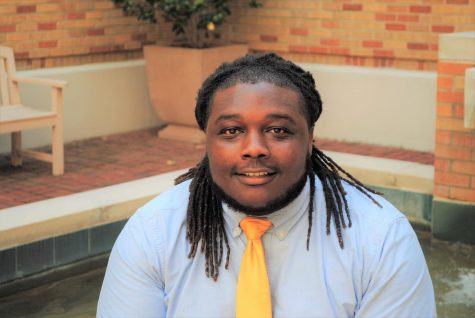The Commonwealth of Dominca
The Commonwealth of Dominica is situated between two French islands (Martinique and Guadalupe). It is a very small, mountainous, and volcanic island known as the Nature Island of the Caribbean because of its natural beauty (rich fauna and fauna, 365 rivers, hot sulphur springs, diverse botany, exotic under water marine life and beaches). The population of the island is only 75, 000 people. There are many sites designated as the World Heritage Site by UNESCO (United Nations Education Scientific and Cultural Organization) for example, “Morne Trois Pitons,” “The Carib Territory,” and “The Boiling Lake” (of which, there are only two in the world).
Dominica, or the Commonwealth of Dominica, should not be confused, as most often do, with the Dominican Republic. Dominica is an English speaking country where as Spanish is the official language of The Dominican Republic.
This unique and diverse island is also home to DSU instructor of Spanish Sylma Samuel Ferreira.
Ferreira’s country has a dynamic cultural background. Having changed hands with the Spanish, French and British in the colonial era, it has a continuum of cultures. The official language is English, but there is a second language called French Creole. Proximity with the French islands of Martinique and Guadeloupe fosters constant linguistic and cultural exchanges and also trade. The island has a rich culture that mirrors its historic past. In addition to the language (French Creole), cultural dances and way of life are representations of history.
Belé is a cultural dance from the African heritage which engages call and answer refrains in the chants, and drumming which motivates the dancers who are interpreting the song. Quardrille and accordion music are borrowed from the Spanish (via Christopher Columbus). The French element is represented by Zouk and Cadence music, which has the French melody and lyrics inFrench Creole, which is also spoken by the neighboring islands of Martinique and Guadalupe. Mazouka is a dance influenced by the French culture. There are also representations of the Spanish and French in the national wear, in the national dishes, and French names of places, sites and food.
In Dominica, the cultural diversity includes the Kalinago peoples, or the indigenous Carib Indians, who inhabit the eastern coast of the island called the Carib Territory. These first peoples, or indigenous group, named the island Whaitikubili in their indigenous language, to mean “Tall is her body.” They maintain their way of life by making Carib crafts, food, and canoes for their well-developed fishing industry. Presently, there are only 3,500 Carib Indians on the island.
Although she is currently in Cleveland, Miss., and calls Dominica home, Ferreria has lived all over the world, including places in Europe and South America, and has worked in multicultural settings all her life. She has taught Spanish for over 20 years and worked with the Ministry of Education in Dominica as a Spanish educator consultant with programs in Spanish countries. Also, she studied for extended periods in Spain, Venezuela, Chile and Argentina. These Spanish encounters led her to be assimilated into the Spanish culture which influences her mannerisms, poetry, and the production of her book Conversemos for instructional purposes.
From 2014 to 2016, she worked as a Spanish Teaching Assistant and studied at the University of Arkansas. From there, she had many other opportunities to work in the U.S., consequently, she came to DSU.
Ferreria states “The Delta is very unique and distinct in many ways. The university is very small and this can be positive. It allows for closer interaction with the students, I am able to work one on one, and it is easier to implement initiatives.”
Ferreira’s dynamic and unique back-ground has a lot to offer DSU. We are lucky to have her, and lucky to learn from her about Dominica.

Dearron, an English Education major, transferred to DSU from East Central Community College. As his career, he is aiming to become a professional English...


